I’ve always loved getting lost. Which is why I often drive on unmarked or back country roads, not knowing exactly what might be around the next corner. These backroads are a feast for the eyes and imagination, even if it takes longer to get to my destination.
But usually, my backroad travels are reserved for shorter trips when time doesn’t matter as much.
A new path
We visit family in St. Louis a few times a year. It’s a long and monotonous 6-hour drive south from Milwaukee, with little visual interest. Flat, tree-less farm lands begin to merge together, the landscape quickly ignored in favor of movies or books. We usually grumble about the drive, believing that there was nothing of interest to see south of Chicago.
Yet recently, I read an article about the revival and interest in the old Route 66. Pop culture usually focuses on the western portion of this road – like Winslow AR, popularized in an Eagle song or the movie Cars. I was surprised to discover how many quirky roadside attractions existed so close to home.
And so our summer Route 66 road trip idea was born – three days of research and a four page itinerary later, we were ready to go.

But first, a somewhat brief history
In 1908, Henry Ford introduced the Model T, and American’s love for the automobile, an open road and freedom was born. And these cars needed somewhere to go.
U.S. Route 66, later coined as the Main Street of America or the Mother Road, was one of the original highways. US 66, established in 1926, became one of the most famous roads in the United States, running from Chicago, IL through Missouri, Kansas, Oklahoma, Texas, New Mexico and Arizona before ending in Santa Monica, CA.
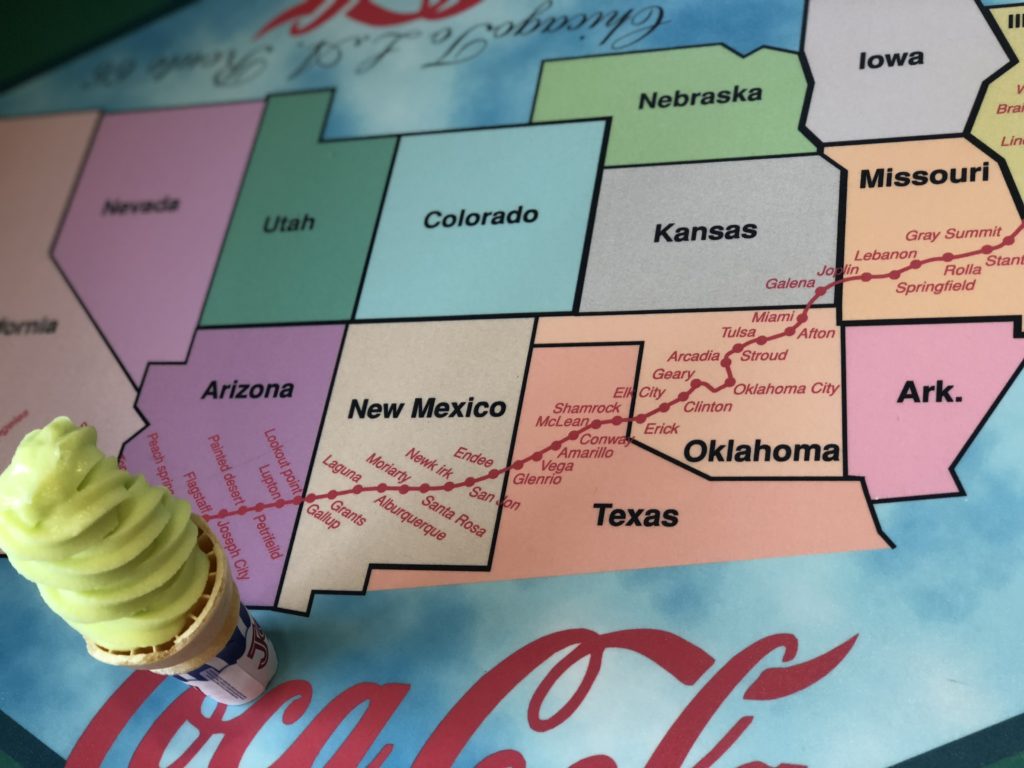
* Kids listen better while eating a Dole Whip.
With the rise of the automobile, the road quickly became popular. And with it, towns along the path flourished. Traffic grew on the highway because of the flat geography and early paved sections, making it a popular personal and truck route.
During the Dust Bowl, many farming families headed west for agricultural jobs in California. During World War II, US 66, already popular and fully paved, became one of the main routes for people moving West and also for transporting military equipment.
America’s Main Street
As the 1950s brought more traffic and tourism, many of the popular roadside attractions Route 66 is known for today were created.
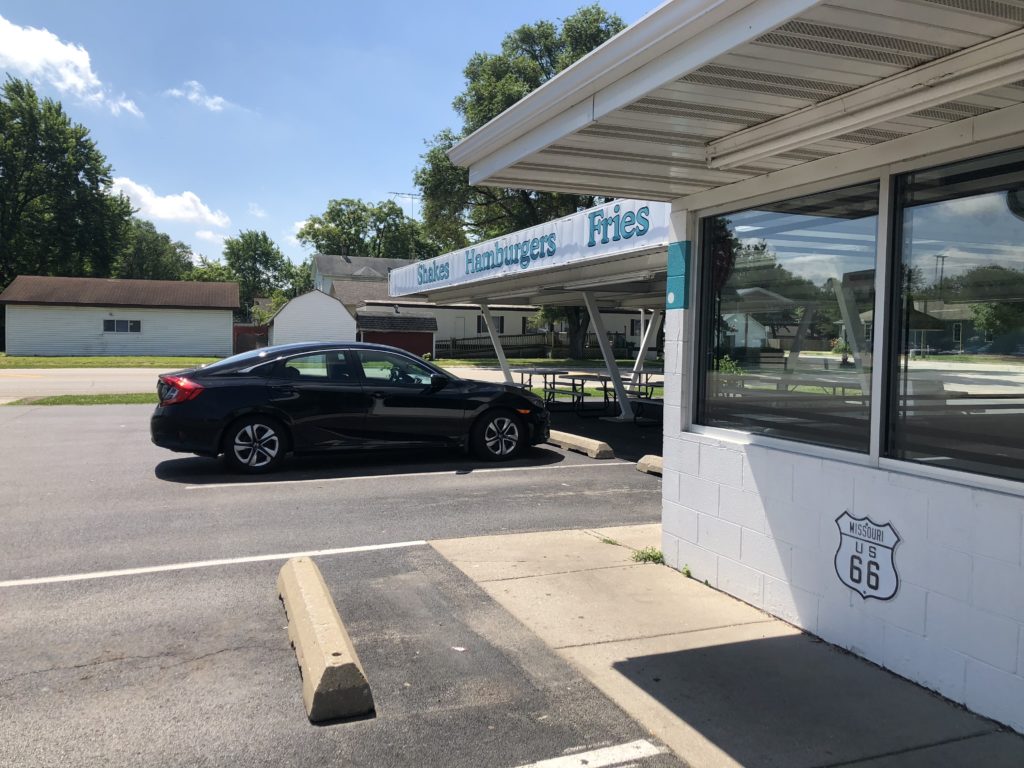
A quest for efficiency
The beginning of the decline for US 66 came in 1956 when President Eisenhower signed the Interstate Highway Act, creating the path for super highways. These new interstates were created with the goal to eliminate unsafe roads, inefficient routes, and traffic jams – creating efficient, fast and safe transcontinental travel.
The new Interstates bypassed towns along old highway routes, creating a more efficient system but limiting access with prescribed controlled entry and exit points for cars. By the 1970s, the towns and businesses along Route 66’s path, were largely empty and obsolete. In 1985, the highway was officially removed from the US Highway System after it had been entirely replaced by segments of the Interstate Highway System.
Today, portions of Route 66 remain, but the towns along the way have all been changed. They are no longer bustling areas for out-of-towners to stop and take a rest as interstates bypassed these places, creating by the faster Interstates, could no longer support themselves and many are now ‘ghost towns’.
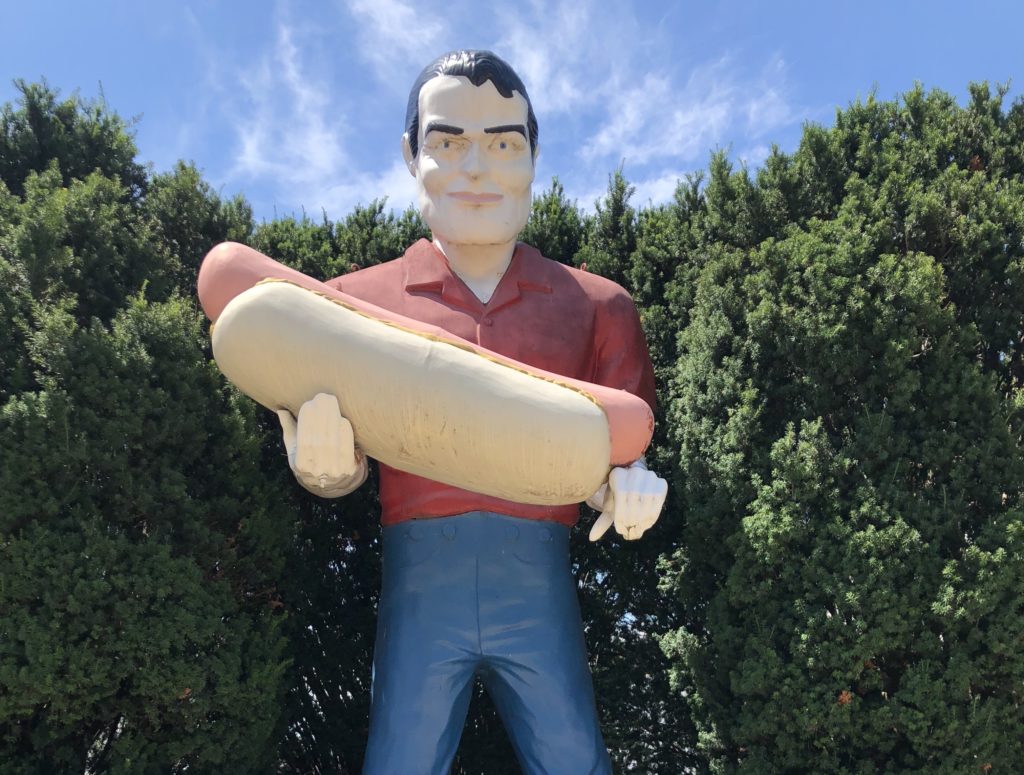
A giant in Atlanta, IL 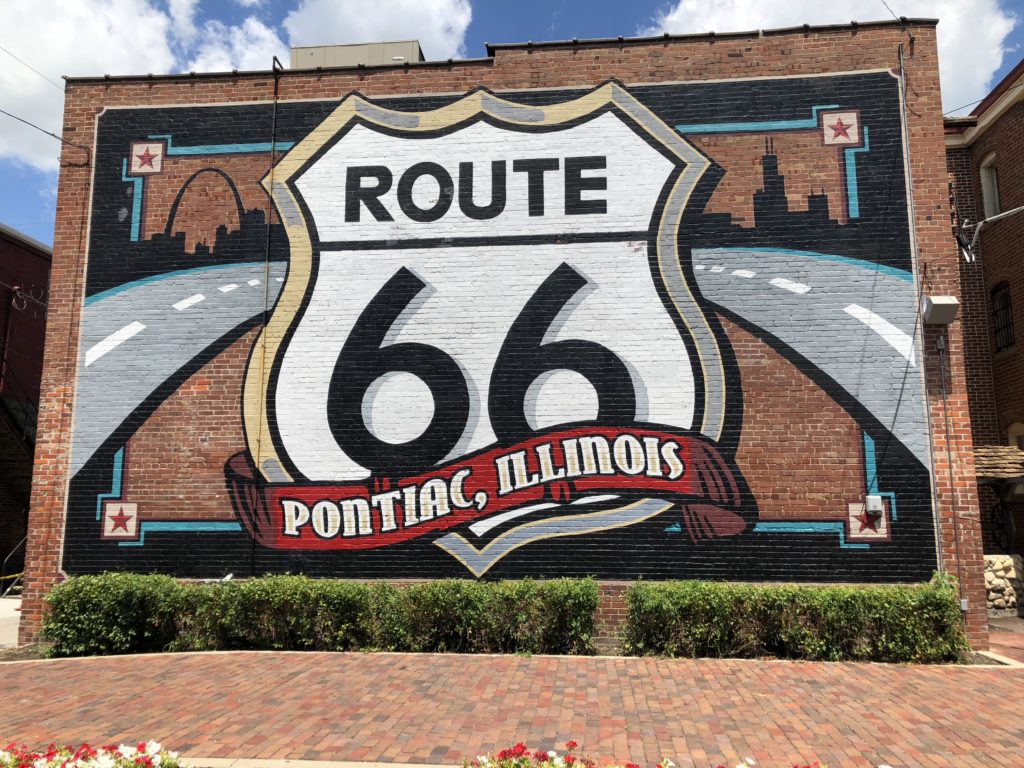
Murals decorate the streets of Pontiac, IL
Hitting the open road
We began our trip as the sun was rising in Milwaukee, WI and drove south through Chicago. Our first stop was Joliet, IL to stretch our legs and fuel up for the long trip ahead.
Perched on top of the Rich & Creamy, the Blues Brothers dance with an ice cream cone and welcome us to our kitschy adventure. We get out and wander around the park on Broadway Street taking in our first sights of the day.
A family from Germany, who we would see on many future stops along the way, took a short walk for a view of the old Joliet prison which was the inspiration for John Belushi’s Blues Brother character, Joliet Jake and once housed many notorious criminals. The girls and I opted to read about the route and stand on an original piece of the brick road.

We wandered for a bit and then decided it was time for coffee and food. After a delicious breakfast and some impromptu piano playing at Jitters Coffee Shop, we were ready to go.
Next up, Wilmington and the Gemini Giant

The Gemini Giant, a former muffler man, sits outside the Launching Pad Drive-In restaurant. Once abandoned, the establishment was recently repurchased and is once again a thriving pit stop with a Rt. 66 museum and the ‘only place one can get a real Dole Whip ice cream outside of Disney’. Or at least that’s what we were told by the friendly and young cashier.
The Launching Pad and Gemini Giant did not disappoint and we begin to feel a little giddy (and quite sugared up). It’s a beautiful day and the girls are remiss to leave, but there’s so much yet to see. A wave to our new astronaut friend and we were off once again.
Betty Who?
We drove through Braidwood, stopped at the Polk-A-Dot Drive-In. Two giant tour buses blocked our path and we decided it was best to keep moving. I feared we would be be swallowed up by photo snapping tourists trying to get the perfect shot of Marilyn, Betty or Elvis.

Put a pin in it
Next up, Dwight and a delightful visitor center within the 1930s era Ambler’s Texaco Gas station. Inside sits an old firetruck and several maps plastered on one wall, with push pins representing all of the visitors since May of this year. We added ours to the already crowded Milwaukee area and P signed her name to the guest book.

At least we weren’t alone in our fascination with oddities and relics of the past.
Almost famous
After touring Dwight’s railroad depot and downtown, we made a quick pit stop in Odell for soda and a tour of another 1930s gas station. The old woman inside was kind and full of stories for the girls, letting them play with the antique cash register.
She seemed to really enjoy us, until V says to her in a very serious tone, “I don’t have a mom or a dad. It’s very sad.” To which the woman just nodded quietly but began to look concerned. So V turned on her unique charm, pointed to me and whispered “I don’t know this woman”.
We promptly left.
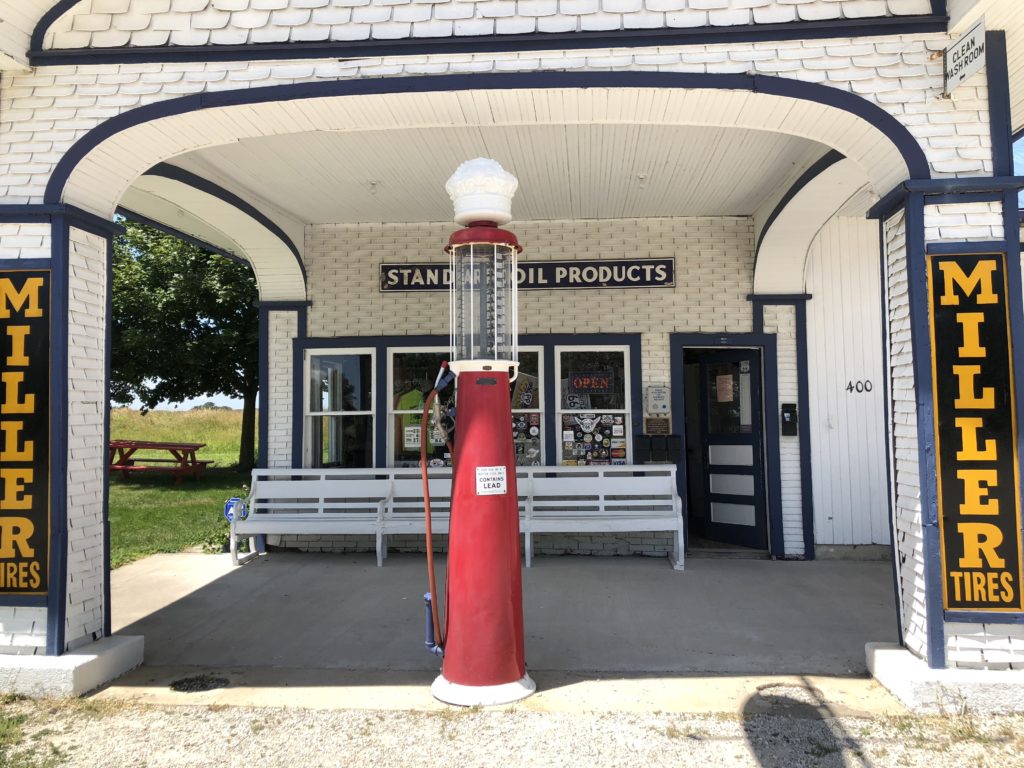
The road ahead
By this time, the sun was directly overhead and the temps were rising into the 90s. Not used to this type of sweltering heat, our stops became shorter and much was viewed from the air-conditioned car. But the heat couldn’t melt my enthusiasm or insistence that we continue along the path.
After many more stops and sights, we finally arrived at our destination, energized and full of stories for the grandparents. They even joined in the fun for a (Route 66 located) Ted Drewes concrete (or two).
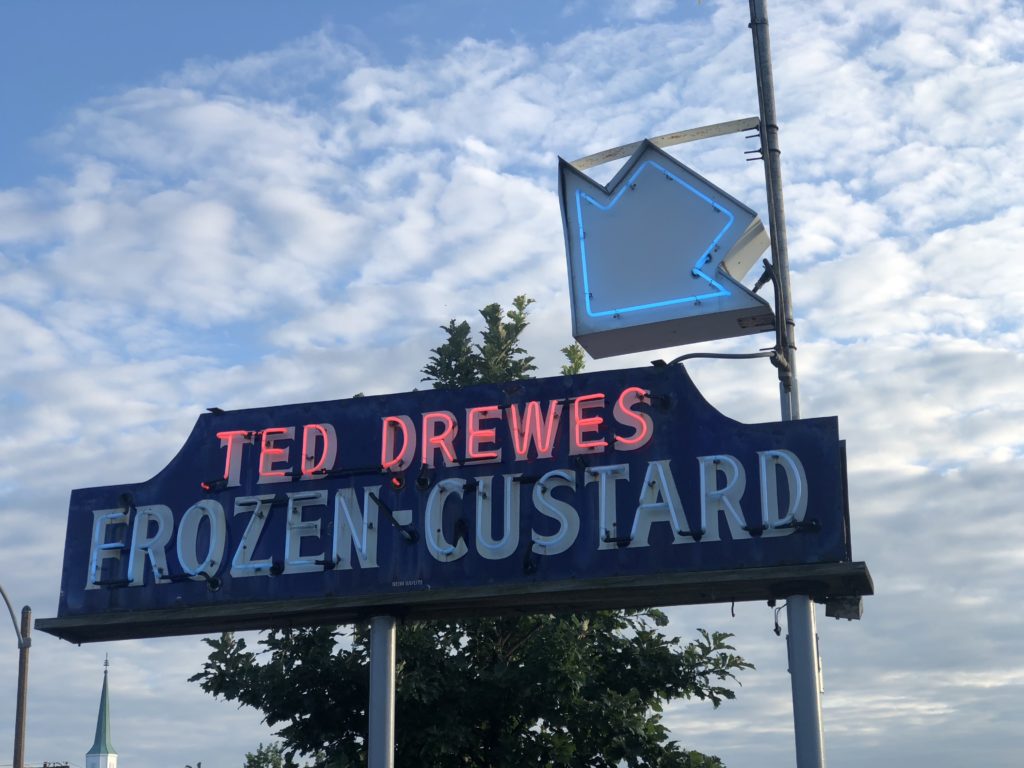
America’s Iconic Symbol
Route 66 remains iconic, a living slice of American history. In it’s 60 year existence, it was the people’s highway, the representation of an America on the move.
The road has represented many things over the years. Steinbeck’s 1939 novel The Grapes of Wrath coined the term Mother Road and made the route a powerful symbol of escape and loss. And yet it’s also meant freedom and opportunity, ushering in the the height of Americana and our love for the open road and country.
For us, it was a chance to slow down, see a bit of history and appreciate a different way to travel.

Why Route 66 still matters
Route 66 will always be a permanent part of America’s very fabric. It paved the way for people to move and change their lives more easily. It connected people, creating economic opportunities and towns along it’s path.
It brought freedom. And became the symbol of a changing America.
Driving through portions of it today feels like seeing treasures buried in time. The ultimate slice of Americana pie.
It’s also a stark reminder on how the quest for progress can rapidly change people and places.
Throughout human history, progress and technical advancement has typically come with costs. The railway made steamboats irrelevant. Mobile phones killed the phone booth industry. Video killed the radio star.
The one constant in this world is change.
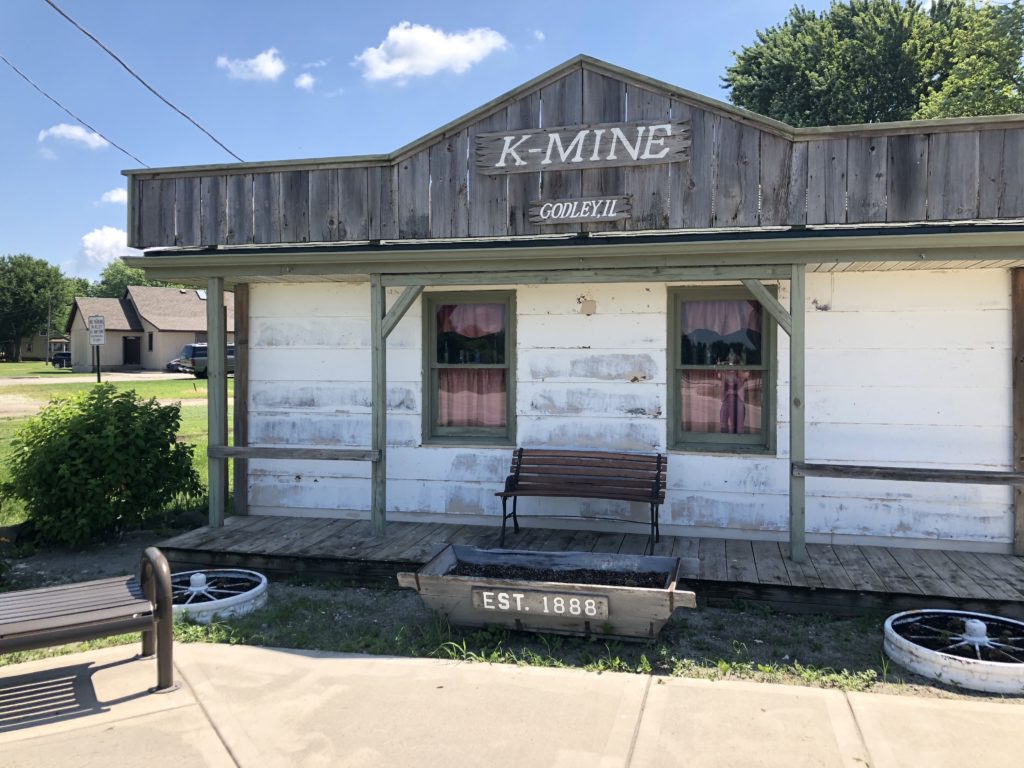
Slowing down
I’ve traveled to St. Louis countless times over the years, usually rushing to arrive in record time and stopping only to refuel. I never stopped to explore or imagine that there was anything of interest beyond the interstate road that delivered me from one point to another.
But now I know that there are treasures just a few miles off that main interstate. Small towns to explore, giants to see, and stories to hear.
All of this we would have missed if our only goal was to get to our destination as fast as possible.
In our quest for progress, we’ve traded efficiency for a deeper connection and understanding of a place. These towns flourished by catering to travelers, much like ourselves who wanted to refuel, explore and experience something grand. But they also created the ultimate experience in car travel.
My girls experienced a bit of wonder with taking the road less traveled. And hopefully gained knowledge that sometimes there’s more just beyond what we normally see. We just have to learn to slow down.

What kind of sweets might we find at the Palace? 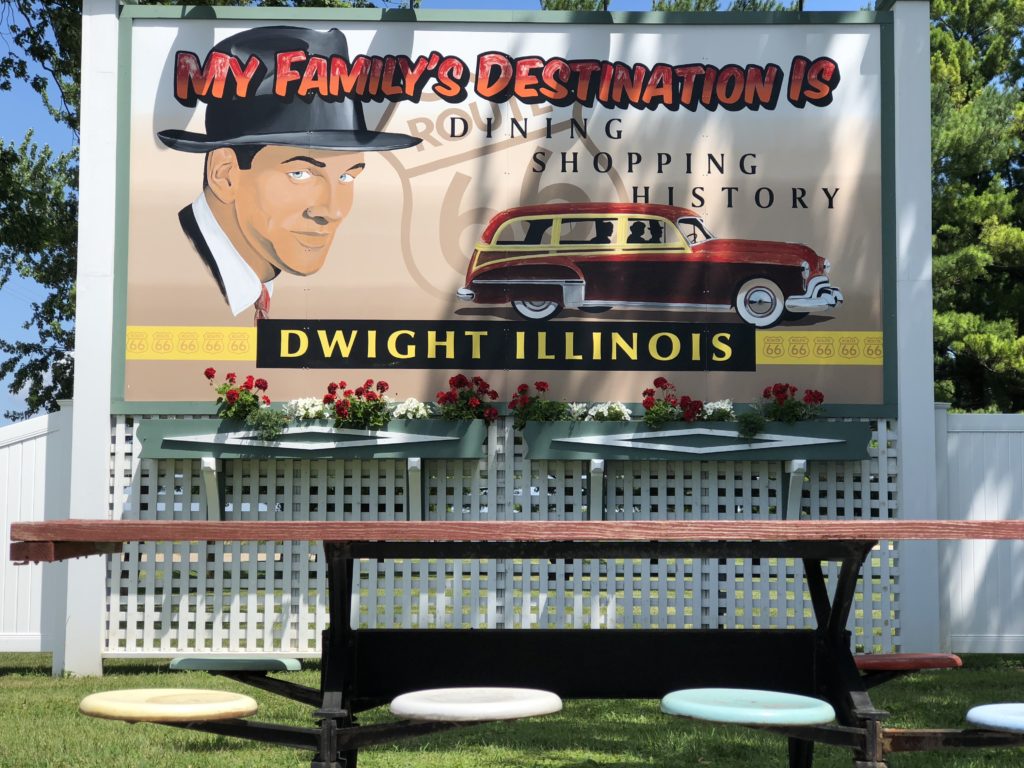
That dad just told his family, “one more sound and I’m pulling this car over!”
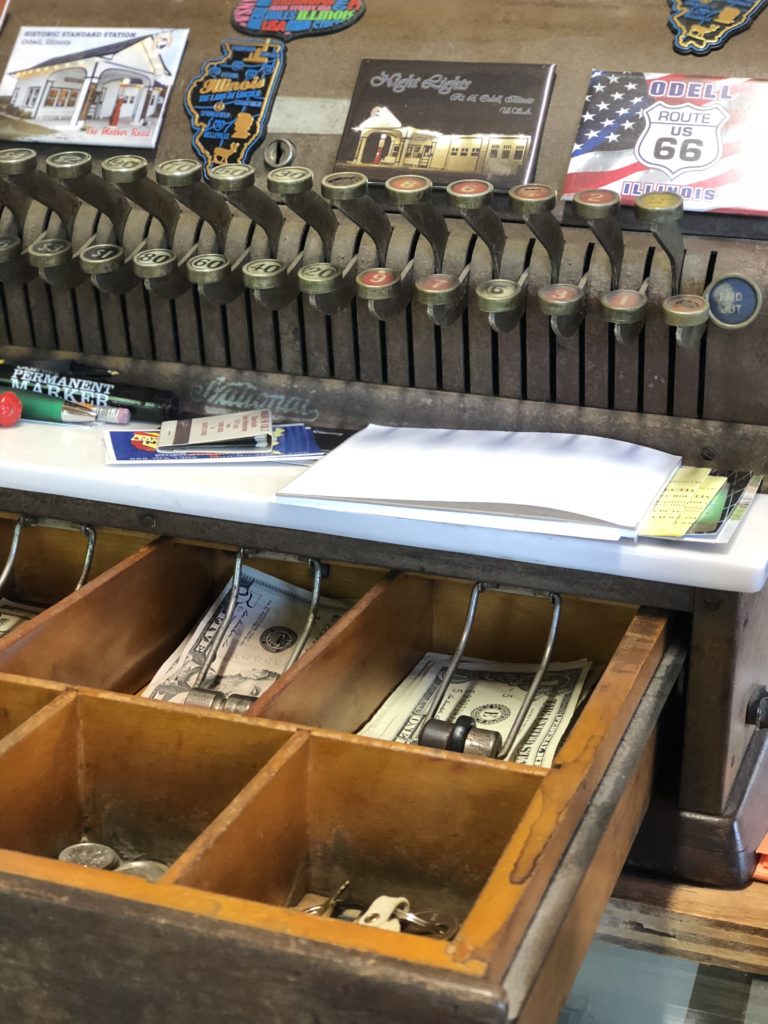
To the kind, old lady behind this cash register: V is very sorry for making you think she was stolen. 
After the harrowing experience on Tatooine, R2D2 decided he needed a break and got lost on the Mother Road.
Want to learn more and experience the Mother Road yourself? Download our full itinerary, including a list of places to see along the IL-Route 66.
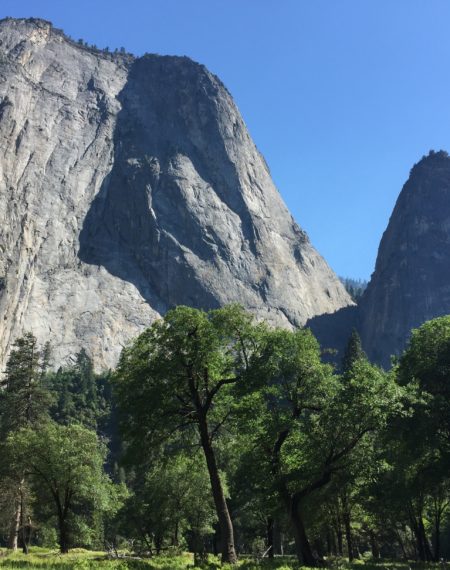 Teetering on the edge. Adventures seeing Yosemite’s Vernal Falls
Teetering on the edge. Adventures seeing Yosemite’s Vernal Falls

